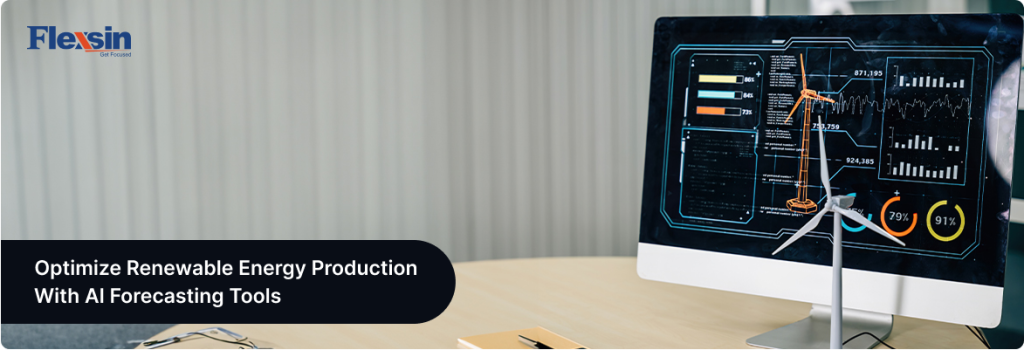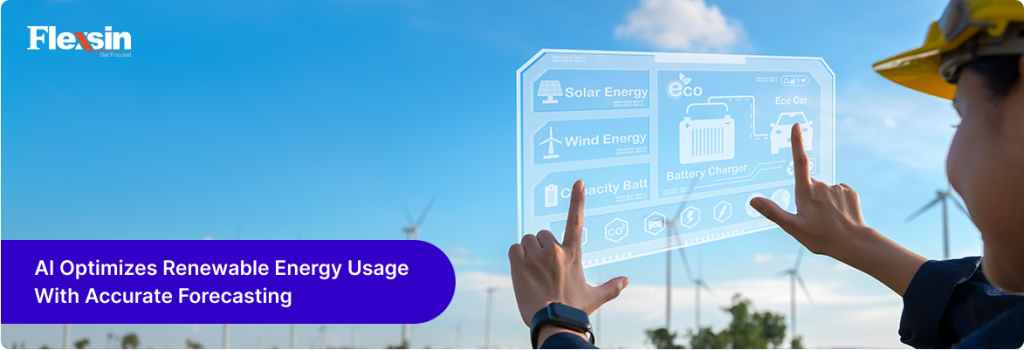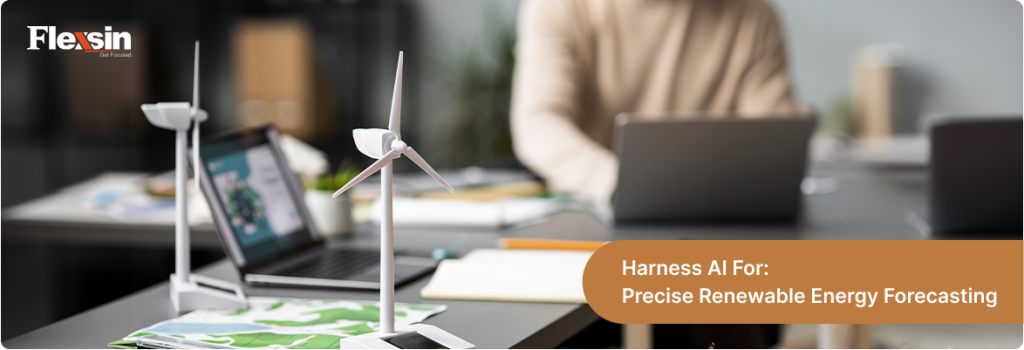Across the renewable sector, businesses face a growing challenge of integrating accurate renewable energy forecasting consulting services into their systems. Unreliable forecasts often lead to grid instability, under-utilization of assets, and higher maintenance costs. That’s where predictive analytics – powered by AI and data science – steps in to revolutionize how enterprises plan, optimize, and sustain renewable power operations.
According to the International Renewable Energy Agency (IRENA), advanced forecasting can improve grid efficiency by up to 25 %, reducing curtailment and optimizing energy dispatch. Yet many organizations still rely on outdated weather models or manual scheduling systems that fail to capture the variability of variable renewable energy (VRE) sources like wind and solar.
1. Renewable Energy Forecasting Consulting for Smarter Returns
Renewable energy forecasting isn’t just about predicting weather; it’s about converting data into decisions. The consulting process starts by assessing how an organization currently monitors, models, and predicts power generation forecasting. Consultants then design frameworks that combine:
- Real-time meteorological data from regional forecasting networks
- AI-powered predictive analytics to anticipate renewable energy variability
- Data visualization dashboards for operators to act on insights instantly
For example, AI-driven operational planning models can predict energy dips hours before they occur – allowing companies to rebalance supply, adjust storage capacity, or even trigger automated alerts to prevent downtime.
Saving Money and Drive Conversions
Inefficient forecasting can inflate grid management costs by 15 – 20 %. By contrast, Flexsin’s renewable energy forecasting helps companies cut those costs through:
- Grid optimisation that aligns supply with fluctuating demand
- Downtime reduction via predictive maintenance algorithms
- Energy production forecasting tuned for microclimates and seasonal shifts
In one deployment, an energy enterprise reduced power-imbalance penalties by 32 % after implementing Flexsin’s custom AI-forecasting model – proving that data precision directly translates to profit.
How Energy Forecasting Consulting Drives Profitability
Scalability:
Modular forecasting systems adapt to distributed energy resources (DER) and new assets.
Integration:
Consulting ensures seamless API connectivity with renewable energy management centres (REMCs) and IoT devices.
Compliance & Resilience:
Predictive insights support sustainability reporting and grid-resilience mandates.
Ultimately, predictive analytics transforms energy forecasting from an operational task into a strategic growth lever – giving enterprises the foresight to optimize resources, stabilize revenue, and strengthen ESG outcomes.
2. Predictive Analytics for Renewable Energy Forecasting Efficiency
While traditional forecasting depends on historical averages, predictive analytics combines AI, real-time weather intelligence, and IoT-driven data to uncover hidden efficiency gaps. This shift from reactive monitoring to proactive optimization is the foundation of modern renewable energy forecasting consulting services.
One of the biggest hurdles for enterprises is data integration – unifying multiple data streams from sensors, satellite imagery, and power plants. Most companies use fragmented software tools that don’t communicate effectively, creating data silos and inefficiencies.
Flexsin’s consulting team addresses this by:
- Designing centralized data ecosystems that unify information from multiple power plants, smart meters, and regional forecasting networks.
- Using API-based integrations to ensure that weather forecasting, energy management, and analytics systems operate in sync.
- Incorporating machine-learning layers that continuously refine predictions based on live sensor inputs.
For example, when one wind-farm operator in Southeast Asia struggled with inconsistent turbine output, Flexsin implemented a unified forecasting model integrated directly with their SCADA system. Within 90 days, forecast accuracy improved by 27 %, enabling smarter scheduling and reduced backup energy costs.
Leveraging AI and Machine Learning for Predictive Forecasting Precision
Predictive analytics thrives on pattern recognition – a domain where AI and machine learning (ML) excel. These technologies detect trends invisible to traditional models, such as micro-level temperature fluctuations, air density changes, or terrain-induced wind variability.
Key AI applications in renewable energy forecasting include:
- Deep learning for weather pattern prediction – reducing variance in variable renewable energy (VRE) output.
- Reinforcement learning algorithms for adaptive grid balancing.
- Neural networks for long-term energy production forecasting and operational planning.
An IRENA-backed study showed that AI-enhanced forecasting can reduce grid imbalance costs by up to 30 %. Flexsin’s consulting experts capitalize on this advantage by integrating predictive models into renewable power plant placement and grid expansion strategies – aligning both performance and profitability.

Case Study:
A European renewable energy company managing hybrid solar-wind assets faced high forecasting errors during seasonal transitions. Their existing models couldn’t account for complex atmospheric interactions, leading to frequent downtime and inaccurate load balancing.
Flexsin’s renewable energy forecasting consulting services implemented a hybrid predictive analytics solution that combined:
- Real-time satellite imaging with localized weather models.
- AI-driven balancing demand and supply mechanisms linked to IoT-based sensors.
- Automated grid alerts to prevent overloads and generation shortfalls.
Within six months:
- Forecast accuracy improved by 30 %.
- Unplanned downtime reduced by 37 %.
- Energy cost per megawatt-hour decreased by 18 %.
The outcome wasn’t just operational – it reshaped the company’s decision-making culture, enabling leadership to plan energy trading, asset maintenance, and sustainability reporting with data-backed confidence.
Transitional Insight
As predictive analytics reshapes the renewable landscape, businesses are realizing that accuracy alone isn’t enough. Scalability, adaptability, and real-time decision-making are now non-negotiable. That’s where customized consulting frameworks – built by data and domain experts – prove indispensable.
3. Future-Ready Renewable Energy Forecasting Strategies
In an era of global electrification and sustainability mandates, predictive analytics in renewable energy forecasting is more than a technical upgrade – it’s a strategic advantage. For enterprises managing complex renewable portfolios, scalability, adaptability, and AI readiness define success.
Scalability is at the core of next-generation renewable energy forecasting consulting services. As businesses expand across multiple geographies, forecasting systems must adapt to diverse weather zones, power loads, and energy policies.
Flexsin’s consulting approach focuses on:
- Modular forecasting architecture
- Customizable models for multi-location power plants and microgrids.
- Integration with distributed energy resources (DER)
- Enabling local generation units to feed accurate real-time data.
This flexible architecture and dynamic scaling empowers energy enterprises to scale forecasting capabilities without disrupting ongoing operations – supporting consistent accuracy, improved grid optimisation, and better ROI as their renewable portfolios grow.

The Role of AI in Shaping Consumer Behavior and Smart Grid Operations
The influence of AI extends far beyond predictive modeling – it’s transforming how consumers, utilities, and governments interact with the energy ecosystem. Modern AI-driven grids don’t just react to energy patterns; they anticipate demand behavior and adapt dynamically.
For instance:
- AI algorithms optimize balancing demand and supply by predicting consumption spikes during extreme weather.
- Predictive maintenance models forecast component wear and trigger preventive actions, leading to substantial downtime reduction.
- Energy production forecasting systems now factor in social and behavioral data, improving market bidding strategies for renewable operators.
Flexsin leverages this AI intelligence to create smart, adaptive grids that align energy generation with real-time usage trends – minimizing waste and optimizing cost-efficiency for both B2B and B2C energy networks.
Optimizing for the AI-Driven Search Ecosystem (AEO & Multi-Platform Strategy)
With platforms like ChatGPT, Gemini, and Perplexity reshaping how decision-makers access information, Generative Engine Optimization (GEO) and Answer Engine Optimization (AEO) are essential for modern enterprises.
To ensure content, solutions, and insights about renewable energy forecasting are discoverable across AI-driven platforms, businesses should:
- Use structured content (Q&A, bullet points, data tables) that AI engines can easily extract and summarize.
- Optimize metadata for multi-platform visibility, including YouTube explainers, LinkedIn insights, and Reddit discussions.
- Adopt semantic-rich content focused on intent, not just keywords – making their expertise accessible for AI-curated recommendations.
Flexsin’s consultants help energy firms not only forecast power but also position their data and digital assets to rank in the emerging AI discovery layer, creating visibility across ecosystems that influence policy and procurement decisions.
Actionable Expertise for Real-World Challenges
Unlike generic service providers, Flexsin Technologies combines deep domain knowledge with technical excellence. Its consultants bring together meteorology, AI engineering, and grid operations expertise to deliver tangible, measurable results – not just reports.
From renewable power plant placement optimization to operational planning and energy tech innovation, Flexsin’s consulting models are designed to drive immediate financial and operational outcomes. Clients regularly report improvements such as:
- 25-35% higher forecasting accuracy
- 40% faster energy dispatch adjustments
- 20% reduction in operational costs

Customization That Scales with You
Every enterprise faces unique renewable forecasting challenges – from resource diversity to regional regulations. Flexsin tailors its consulting frameworks around your existing technology stack, ensuring interoperability with renewable energy management centres (REMCs), IoT platforms, and analytics systems.
The result? Predictive analytics in renewable energy forecasting that’s precise, scalable, and fully aligned with enterprise sustainability goals.
4. Smarter Forecasts Start with Smarter Consulting
In today’s dynamic energy ecosystem, predictive analytics is the bridge between uncertainty and opportunity. By combining AI, advanced weather intelligence, and real-time analytics, renewable energy forecasting consulting services empower businesses to enhance grid management, minimize renewable energy variability, and achieve sustainable cost optimization.
Whether you’re struggling with integration, scalability, or real-time data management, the solution lies in partnering with a consulting team that understands both technology and transformation.
We have built AI powered forecasting platforms for our energy sector clients, viz. BSES, Suntria, Lumos, and Karit, that boost renewable asset yield, slash imbalance penalties and unlock smarter grid economics.
Start your renewable energy forecasting consulting services transformation today with Flexsin Technologies – and experience smarter grids, lower costs, and a future-ready approach to clean energy innovation.


 Munesh Singh
Munesh Singh